Get caught up on everything you missed!
I’m Covering a SpaceX Rocket Launch with NASA Social next week!
NASA Social Rocket Launch, Day 1: Growing Plants in Space and a Lot of Science
Day one of NASA Social was already amazing, my head was swimming with the amount of information I had to digest. I spent most of the evening editing pictures so I could get my post up as quickly as possible, but as I hit the Schedule button for the post to go live I laid back and finally let my brain relax, waiting to see what thoughts would float to the surface. I thought about many themes: human progress, technology, the humility of the scientists and everyone we met at NASA, and even the diverse group of people attending the event. All walks of life sharing a mutual interest in space, it was really cool to be a part of it. As I drifted to sleep I figured Day Two would be as amazing as the first day, not knowing just how right I would be.
I awoke with a tremor of excitement. It was Launch Day. Also, it was really windy, we were all nervous about the launch getting scrubbed but were excited nonetheless.
T-13 hours: Kennedy Space Center Visitor Complex and the Space Shuttle Atlantis
Our official NASA Social touring and eventing didn’t begin until 3pm so the NASA folks were kind enough to give us tickets (and free parking!) to the wonderful Kennedy Space Center Visitor Complex. The visitor complex has all manner of exhibits about the space program, launch vehicles, but the star of the show has to be one of only two space shuttles remaining on earth: Atlantis.
I walked in from the massive parking lot and was thankful to already have a ticket, as I skipped the lines waiting at the ticket windows (you can buy ahead of time, I strongly recommend this!). I walked into the complex and immediately made my way to the Rocket Garden.
It was fun walking among rockets standing tall, reading about their missions and being generally amazed at how almost all of these were built before the desktop computer was a thing. It made me feel math-stupid (just like real math does today) but, man, such respect all the women and men who solved incredible problems to not only make these things but also make them fly.
The rockets also helped give me some scale at the sheer size of these things. It’s so hard to get a feel for how big a rocket is when you’re watching a TV broadcast or reading about it on your favorite travel blog [winks], getting to see one up close helped me appreciate just how (scientific term coming up) freaking huge these things are.
Casually hanging out among the rockets is a Saturn IB rocket engine. People would just stand there in awe. Guys made low grunting noises imagining the amount of noise those things produced. Above all, I continued to be amazed at just how massive it was.
There’s an omnipresent fixture at the Kennedy Space Center Visitor Complex. From almost anywhere in the park you’ll see it.
The fuel tank and solid rocket boosters for the Space Shuttle Atlantis.
The Atlantis exhibit is in its own area of the park, and that’s where many people head to when they first enter, so get there early! As you walk up you’re greeted with such an enormous spectacle that you’ll struggle to fit the entire thing in a picture you subsequently post on your travel blog.
When you walk inside you walk along pathways that highlight some incredible quotes by space shuttle designers and images from the history of the space program and the shuttle. You’ll then reach the top of a walkway, where a friendly person will ask you to wait while a clock above them counts down to zero (this helps manage crowds). When it hits zero, you’ll walk into a large room where a brief video plays giving some of the history of how the shuttle was developed. After the video you walk into yet another room for yet another video. You’ll be tempted to be like “ugh why so many videos I wanna see the shuttle” like I did, but trust me…the unveiling of the shuttle is so incredible it might actually bring you to tears.
It was time to see it…the actual Space Shuttle Atlantis.
After you’ve stood there and gawked at the amazing sight in front of you, the exhibit hall is filled with smaller exhibits about life in space, among them a simulated Space Shuttle cockpit where you can sit there and make semi-loud jet and/or shuttle noises before realizing you’re in your mid-30’s and that people are staring.
…oh there’s also an actual AstroVan which would take the astronauts from quarantine (at the door in the Day One post) to the launch pad.
The last stop I made at the Atlantis exhibit was a very poignant and touching remembrance hall celebrating the lives of those lost in the two Space Shuttle catastrophes, Challenger and Columbia. It had personal effects from each astronaut and was constructed in such a way to be quiet and solemn.
I enjoyed my time at the visitor complex and strongly encourage you to pay it a visit if you’re in the area!
T-9 hours: Touring the massive Vehicle Assembly Building
We assembled at just after 3pm in the same parking lot as the day before, excited for the day to come. The excitement was palpable when word spread that our first stop of the day was visiting the Vehicle Assembly Building (VAB)!
The VAB has been synonymous with Kennedy Space Center ever since it was completed in 1966. Towering over the surrounding rural landscape at 526-feet tall (that’s over 87 fathoms! #math), the VAB was purpose-built to house the vertical assembly of Saturn rockets and, years later, the Space Shuttle. Like seemingly everything in the space program, it’s hard to appreciate just how big the building is without standing in it. It’s one of the largest buildings in the world by volume, is the tallest single-story building in the world, etc. etc. It’s so big that legend has it they had to install moisture-prevention systems in the roof to prevent actual clouds from forming. The NASA staff told us it wasn’t true that clouds could form, but I had curmudgeonly already decided it was true (yes, Pluto is still a planet to me), so I’m writing it anyway haha.
Instead of driving past the VAB like we did the day before, we took a left turn and drove right up to it! Everyone on the bus was slack-jawed in the presence of such enormity (the NASA folks said watching the reactions never gets old). We hurried out, making all manner of childlike excitement noises.
Even the doors are part of the extreme scale of the space program, they are the four largest doors in the world and take 45 minutes to open completely!
We walked through the (only partially-opened) enormous door and got our first look inside the VAB.
There are many elements of the VAB which are native all the way back to the Apollo program (the reddish platform pieces, for example).
I’m a huge fan of single-point perspective shots, so I walked ahead of the group to find the middle of the building to point my camera up. And man the picture turned out well.
I was informed by one of the fellow attendees that I was standing on a piece of history. I looked down at my feet and saw a red dot on the floor. They used this dot to line up the tailfin of the space shuttle!
The building was everything I thought it would be and more. Logical question though, what are they using it for now that the shuttle program has been retired? Well, they’ve renovated it, leased out some of the high bays to private corporations (part of the continuing effort of making KSC a spaceport for both public and private use), and will use it to construct the SLS rocket as part of the Artemis program to send humans back to the moon in the next few years.
The VAB has a series of five massive cranes built into the ceiling to assist with lifting and constructing enormous rockets. Those cranes are still in use today as preparations are made for the Artemis program.
It almost gave me vertigo following the crane cables all the way up to the ceiling!
We walked over to High Bay number 3 where we saw an incredible sight: one of the two mobile crawlers in existence.
These crawlers are the enormous vehicles upon which the Saturn rockets and Space Shuttle assembles were constructed and, along with their mobile launchers, driven out to the launch complex. Moving at a whopping top speed of 2mph (although only 1mph fully loaded), the two mobile crawlers, nicknamed “Hans” and “Franz” are the original two delivered to NASA in the 1960’s. Each one of those treads on the right weighs 1 ton, to give you an idea of the mass we’re talking about. The crawlers require a team of 50 to operate and drive down the crawlerway to Launch Pad 39A or 39B, the closest being 3.4 miles away. Even at such slow speeds, the crawlers have driven a combined 3400 miles in the past 54 years!
I asked to drive one and was politely told no (ugh), but they’re still training new drivers to this day! Every once in a while, they’ll drive one back and forth to make sure everything is operating properly as these beasts prepare to return to regular use in the next few years.
I kept taking pictures for as long as I could, but eventually our time in the VAB began winding down and the poor NASA chaperones had to try and pull us away from the spectacle.
On our way out, we walked past the Space Shuttle remembrance wall, signed by everyone who worked on the shuttle, an icon of modern engineering and human progress.
NASA does an amazing job of remembering where they’ve come from.
We made our way back to the bus for an incredible follow-up to visiting the VAB. We followed a road that ran parallel to the crawlerway out to Launch Complex 39B to take a look!
T-7 hours: Touring Launch Complex 39B!
The bus drove right up to the launch pad after picking up the Pad Manager, a Navy vet who, in addition to rocking some sweet aviator sunglasses, was an absolute encyclopedia of knowledge. He pointed out so many interesting things it was hard to remember them all, but everything seemed like it was either World’s Largest or World’s Most Voluminous, etc.
We exited the bus and immediately stepped onto some metal grating, which was the actual path driven over by the mobile crawlers!
We walked over to the rest of the launch infrastructure, there to support the safe launching of Saturn rockets and the Space Shuttle. Since the retirement of the Space Shuttle they’ve since modified the complex to be ready for the next generation of rocket launches.
Among the modifications made were renovating the Flame Trench, which guides the extreme heat from the rocket engines down and away from the launch platform.
The Space Shuttle needed a bidirectional Flame Trench but the SLS rocket will only need one because…science (I didn’t listen for the complete answer, sorry). Also, although it wasn’t specifically mentioned, Flame Trench would make an excellent name for a rock band.
Someone asked what the water tank-looking thing was off the side of the complex. It turns out it was…a water tank. During a launch, 300,000 gallons of water flow into the launch area almost instantly for sound suppression. Why sound suppression? The incredible noise from the rocket engines is so powerful that the sound waves bouncing back could shake apart the rockets and destroy the launch vehicle. Most of what I always assumed was rocket exhaust coming out of the launch vehicle is actually steam from the water evaporating instantly.
We were all fascinated by everything (the sheer scale of it, most of all), but I couldn’t get away from the crawler tracks.
Those tracks launched Saturn rockets. Those tracks launched Apollo 10 (the dress rehearsal for the moon landing). We were walking on the shoulders of giants.
As we boarded the bus for our next stop, I looked out over the crawler tracks, imagining what seeing a crawler with the Space Shuttle and mobile launcher sitting atop would look like as it crept along. It humbled me. The sheer greatness of the task that stood before so many and they still succeeded.
Our visit to Launch Complex 39B was complete. Our next stop…SLC-40, where the Falcon 9 rocket which would launch only five hours later awaited us, stay tuned for the epic finale of my NASA Social trip!
Next post: NASA Social Rocket Launch, Finale: Up Close with a Falcon 9 Rocket and Watching it Blast into Space


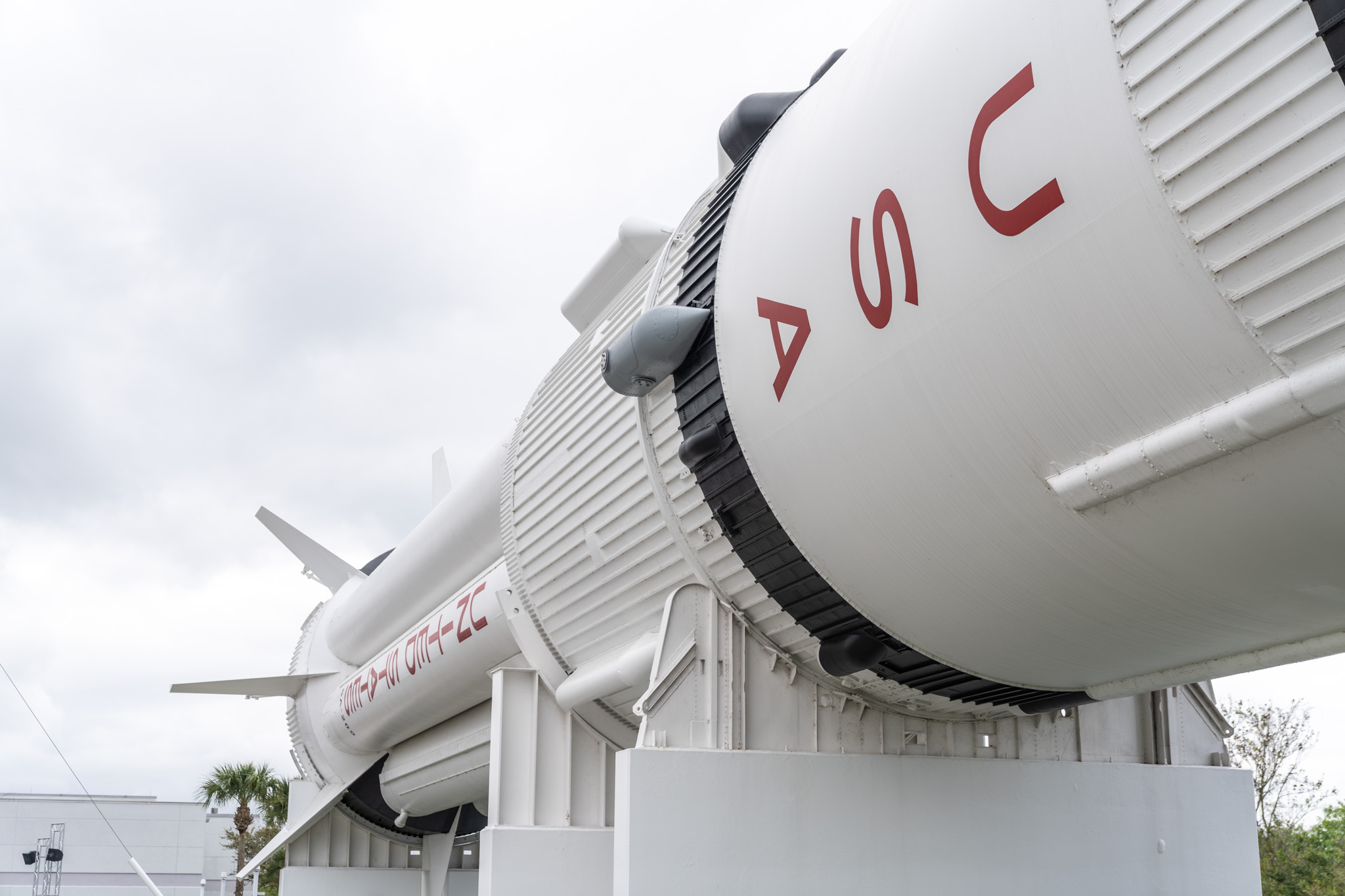

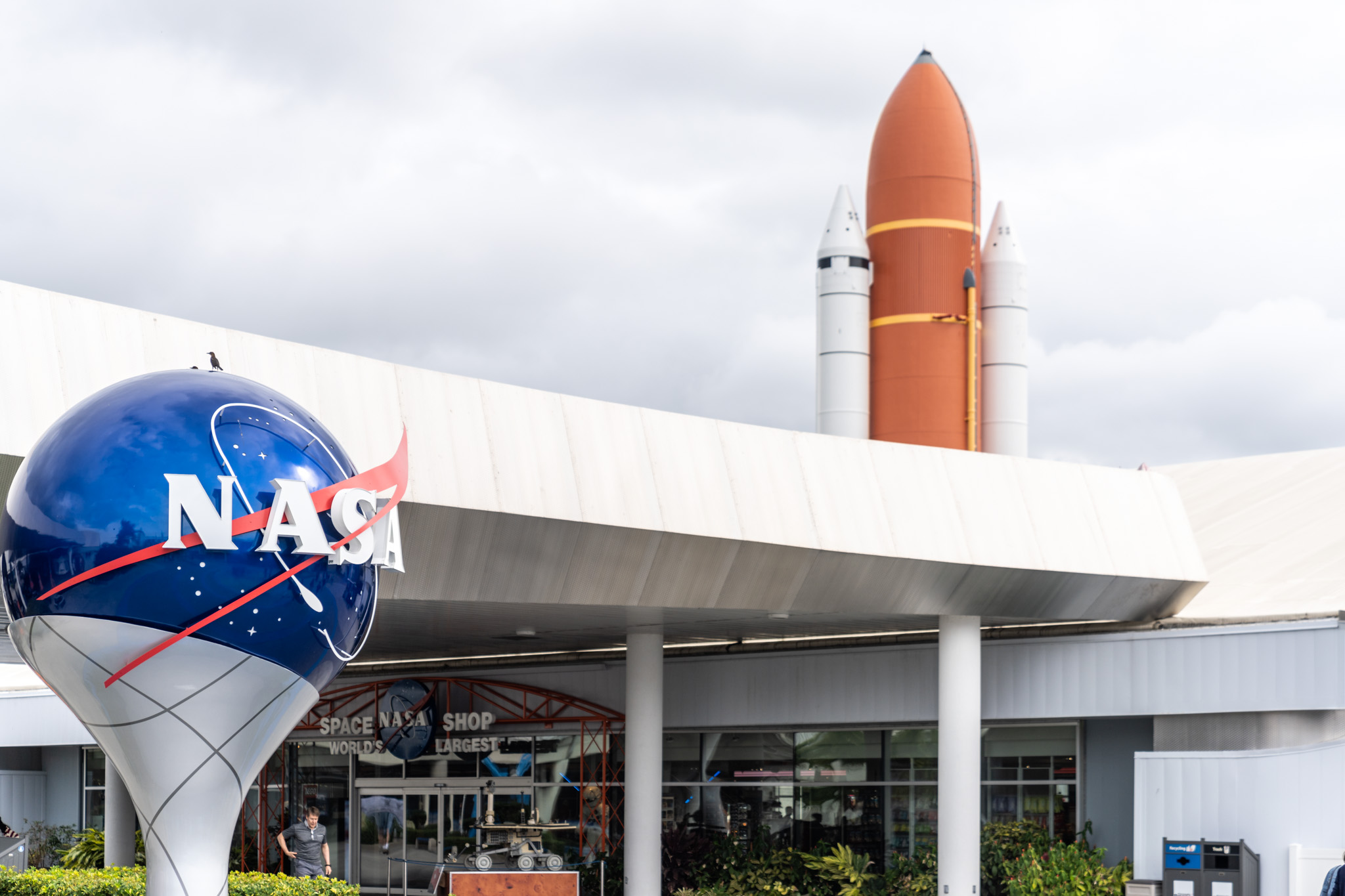
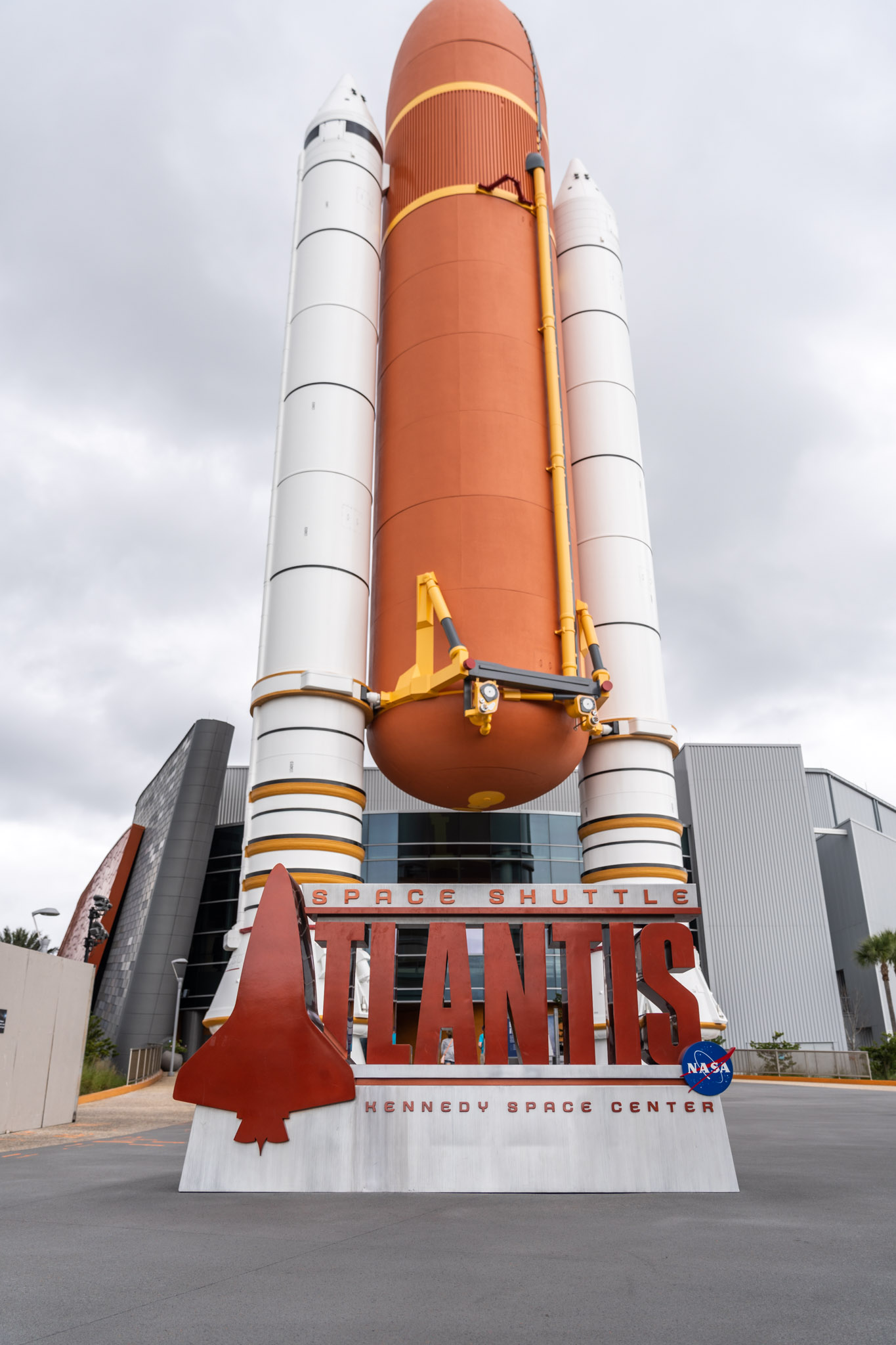

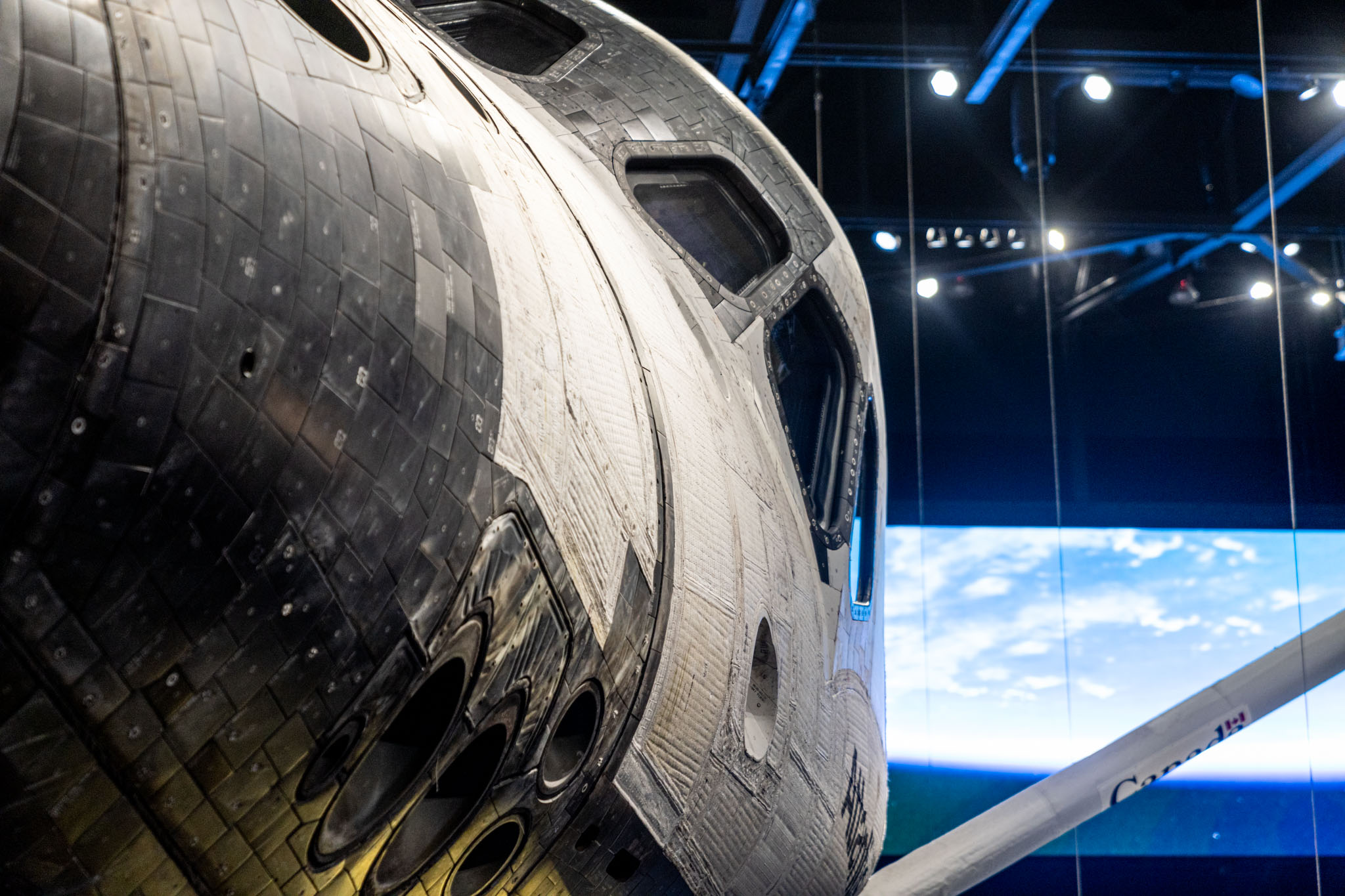

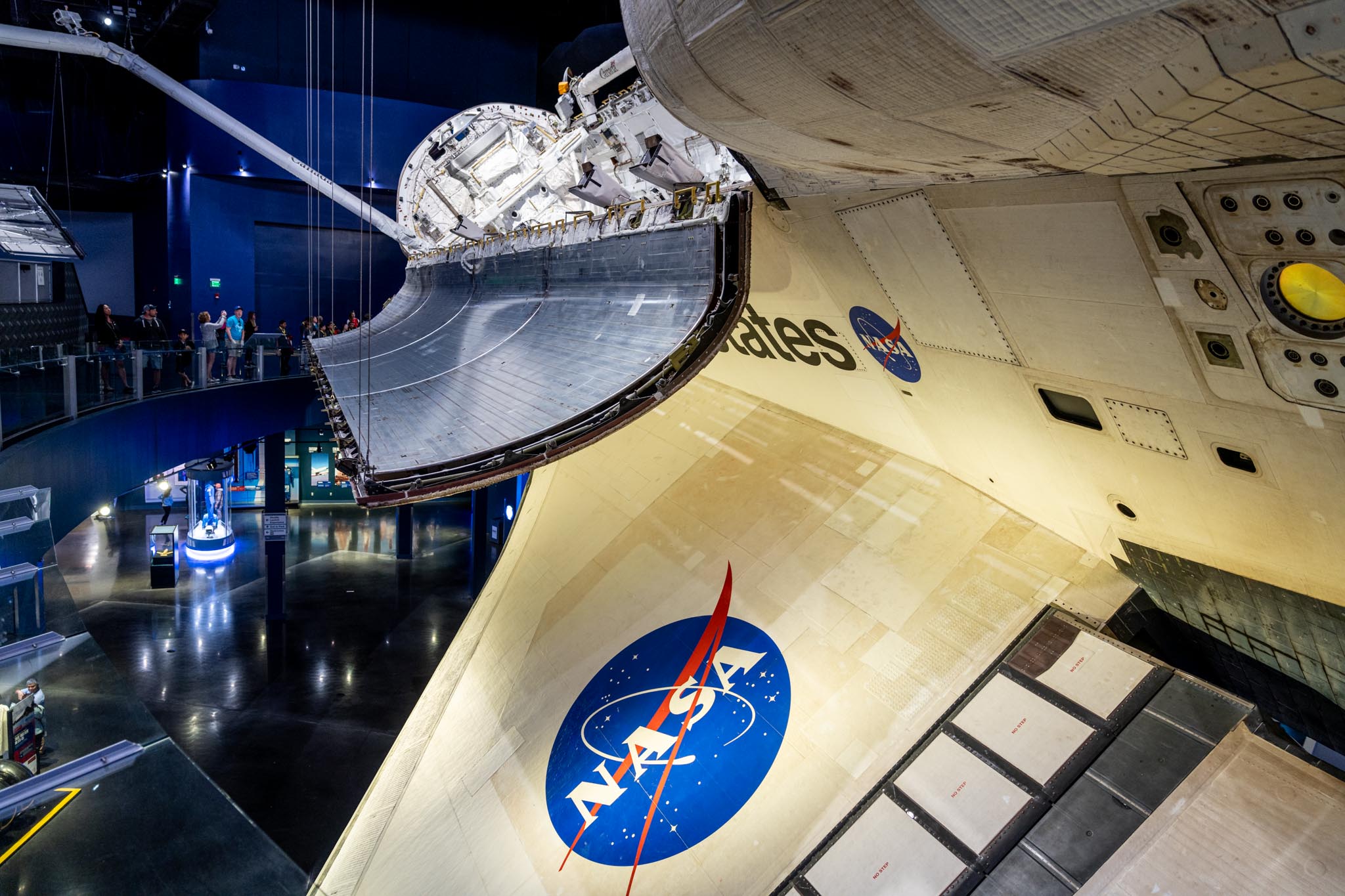
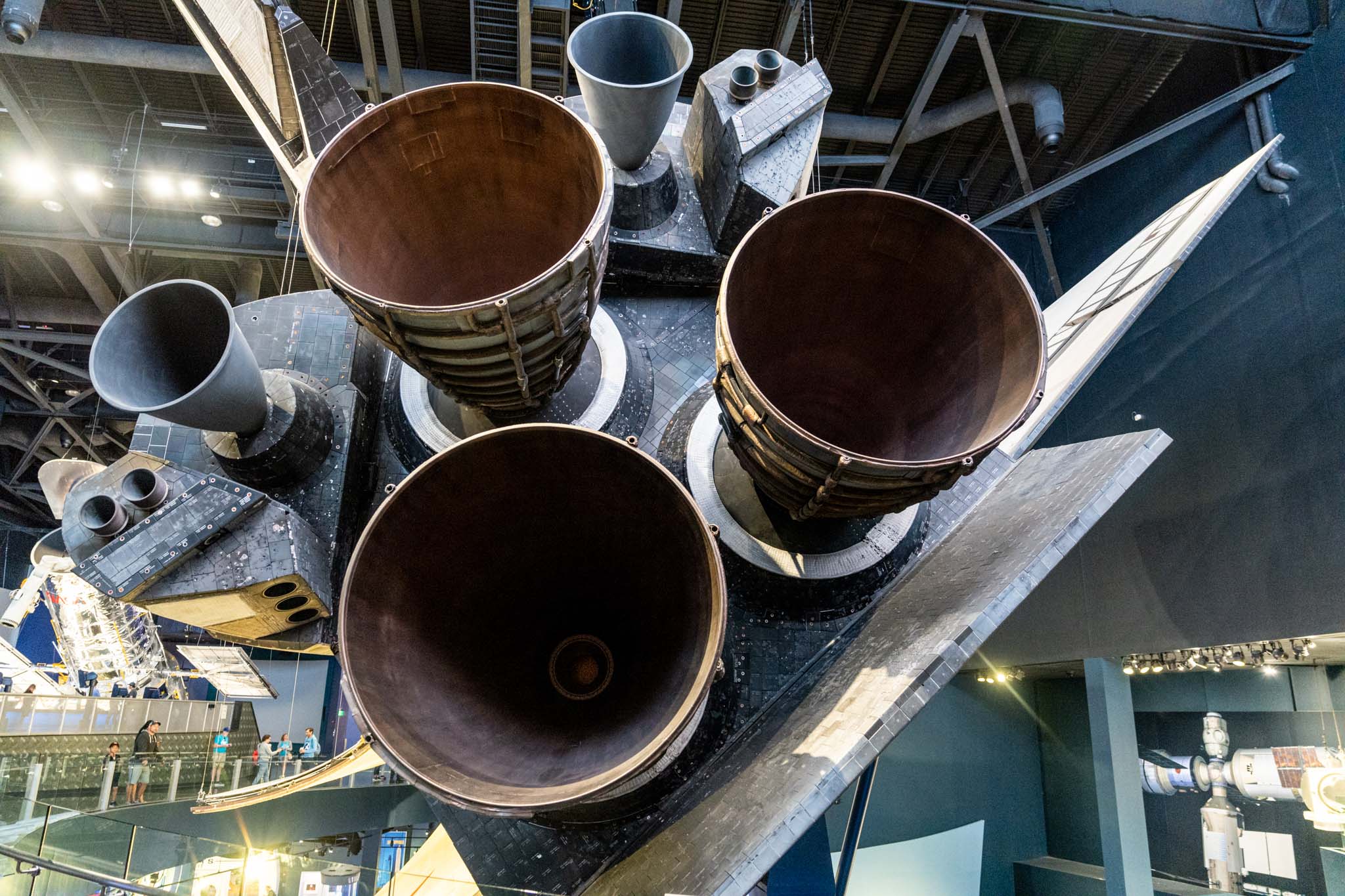
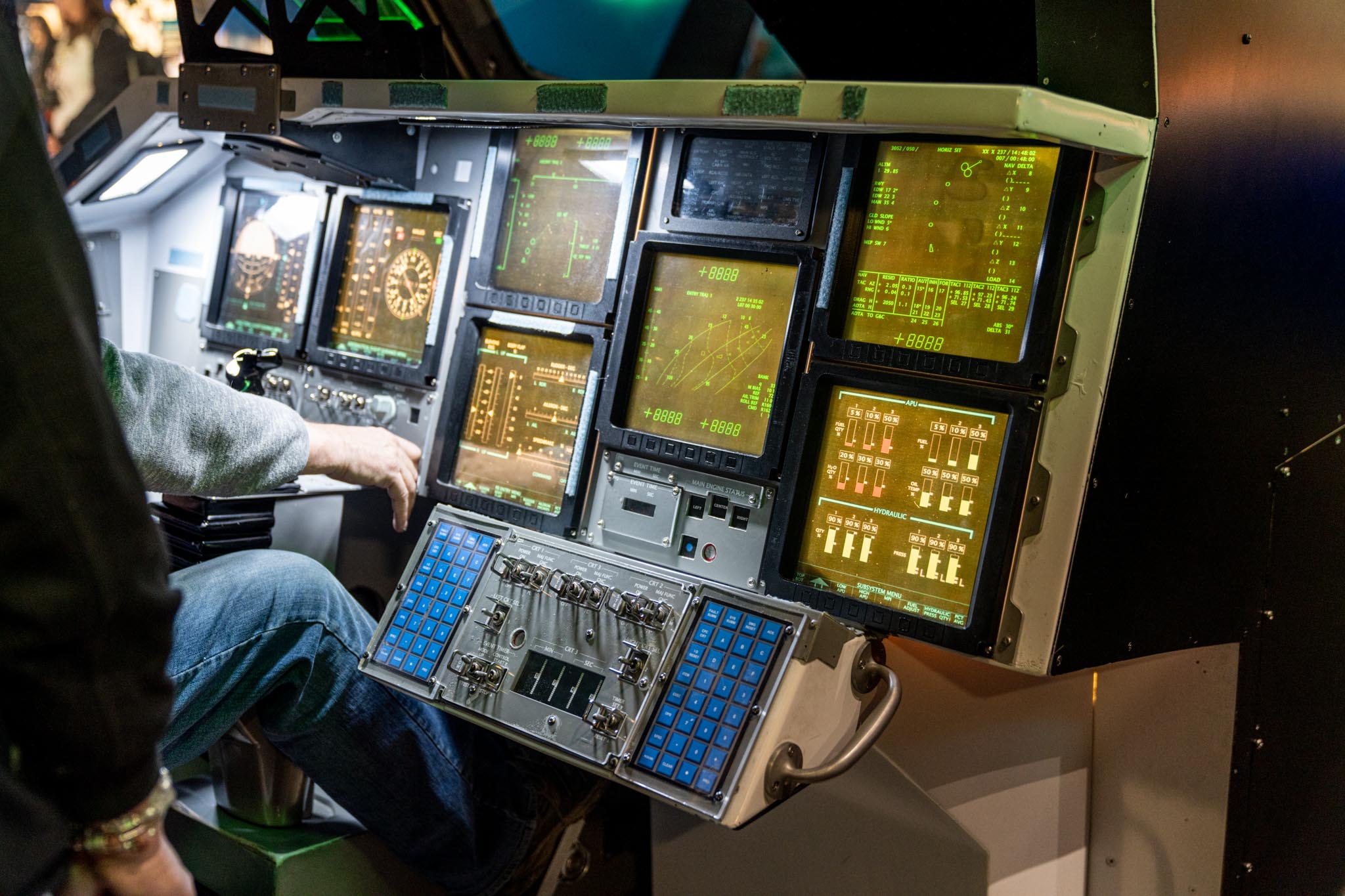
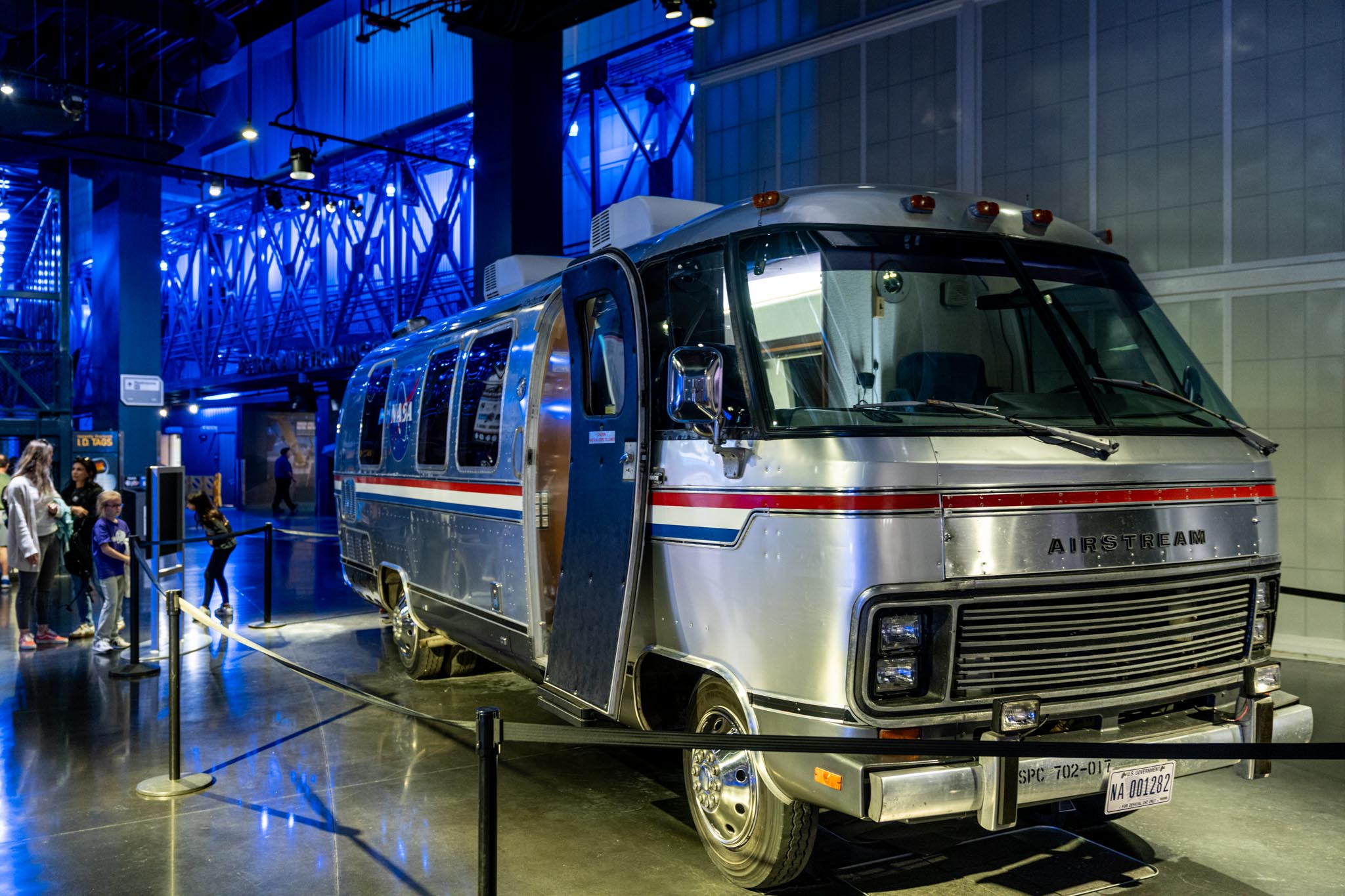


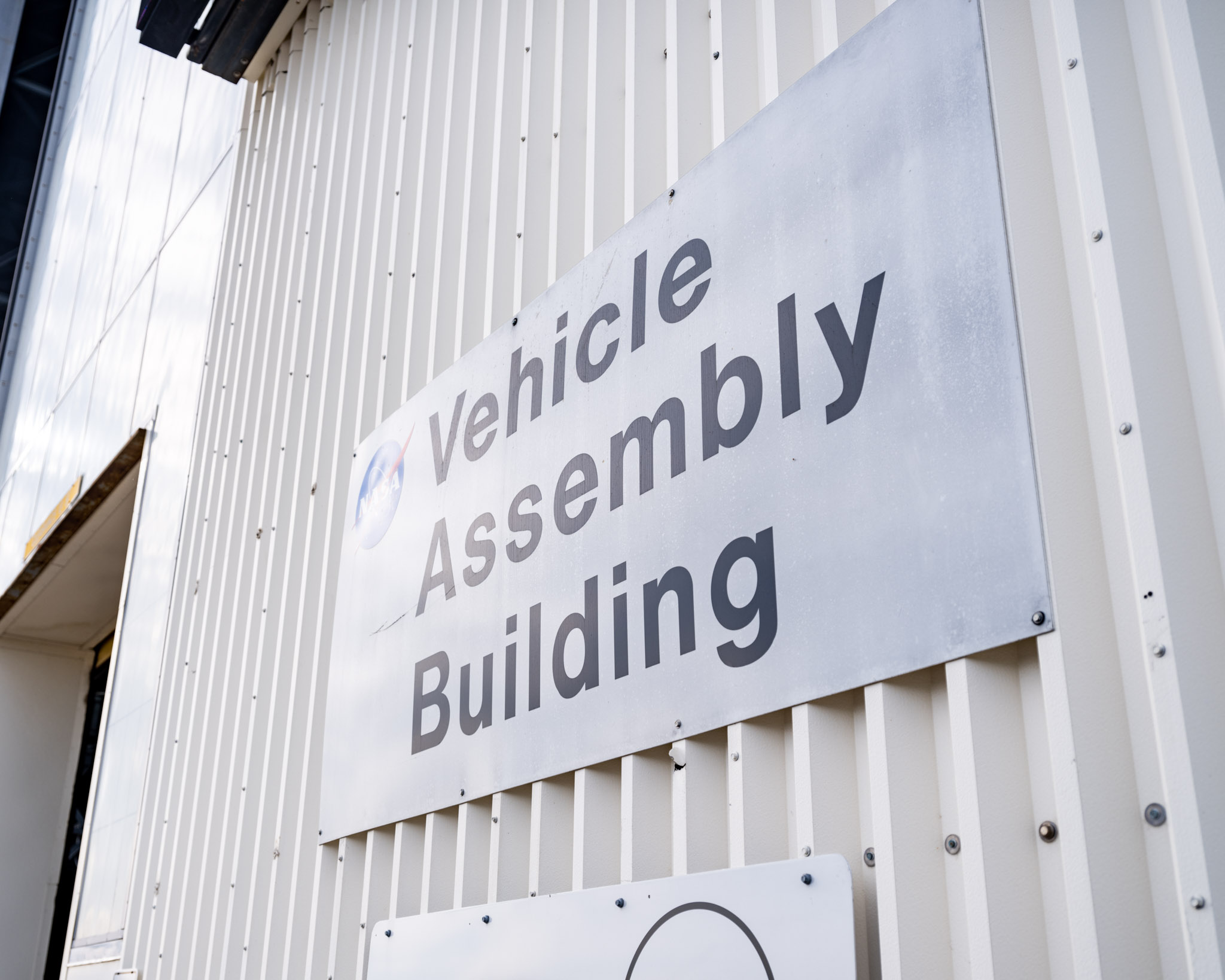
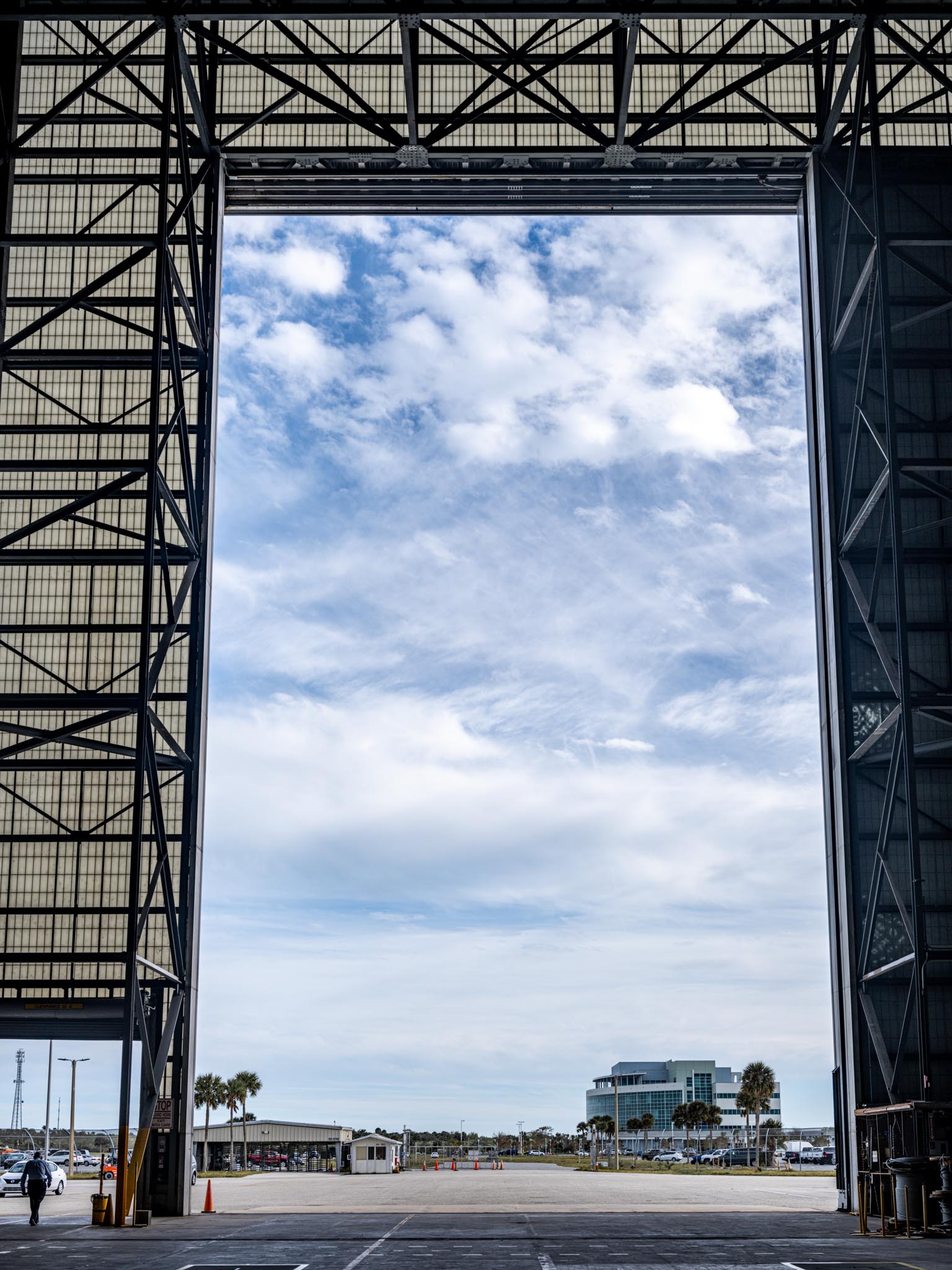
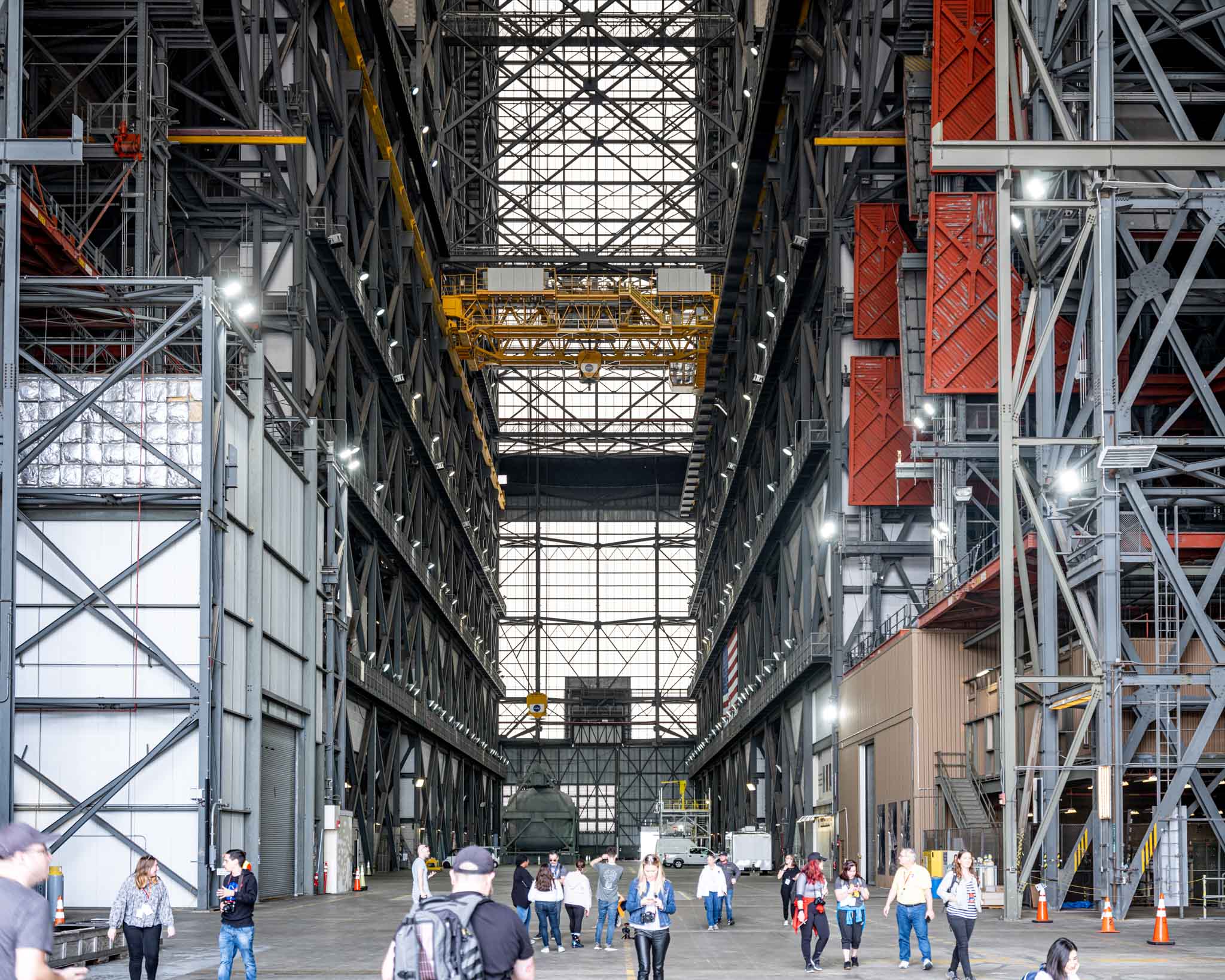

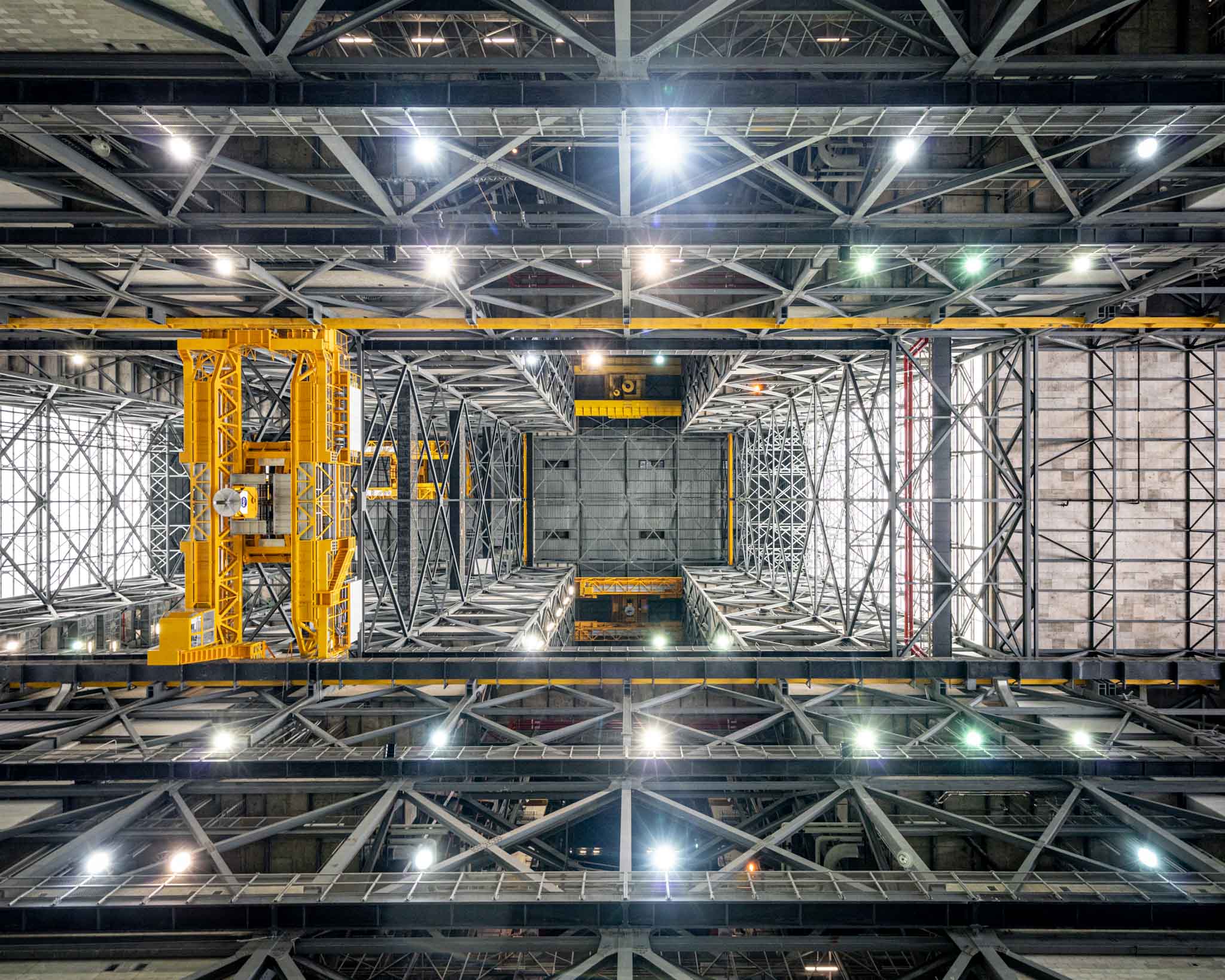
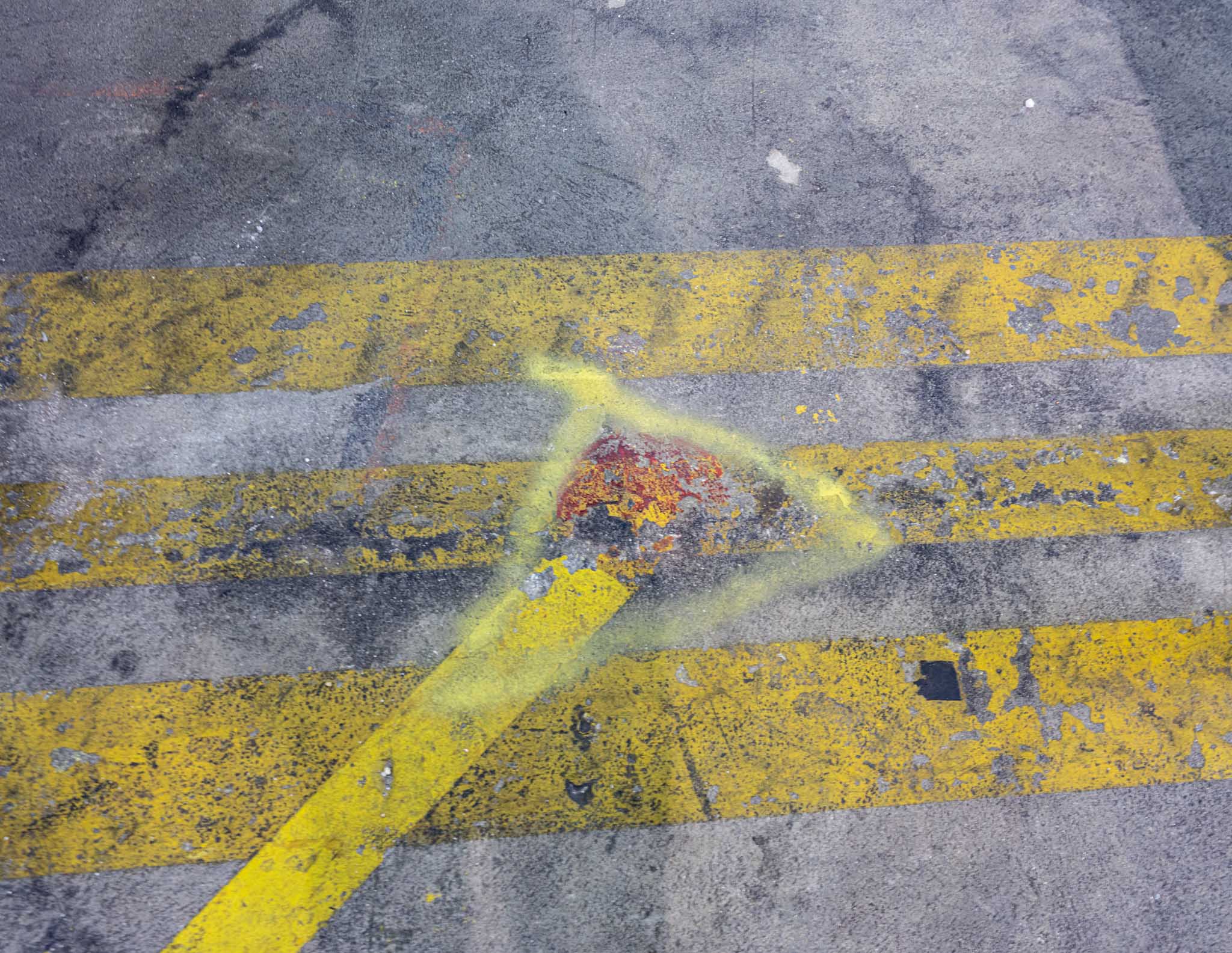
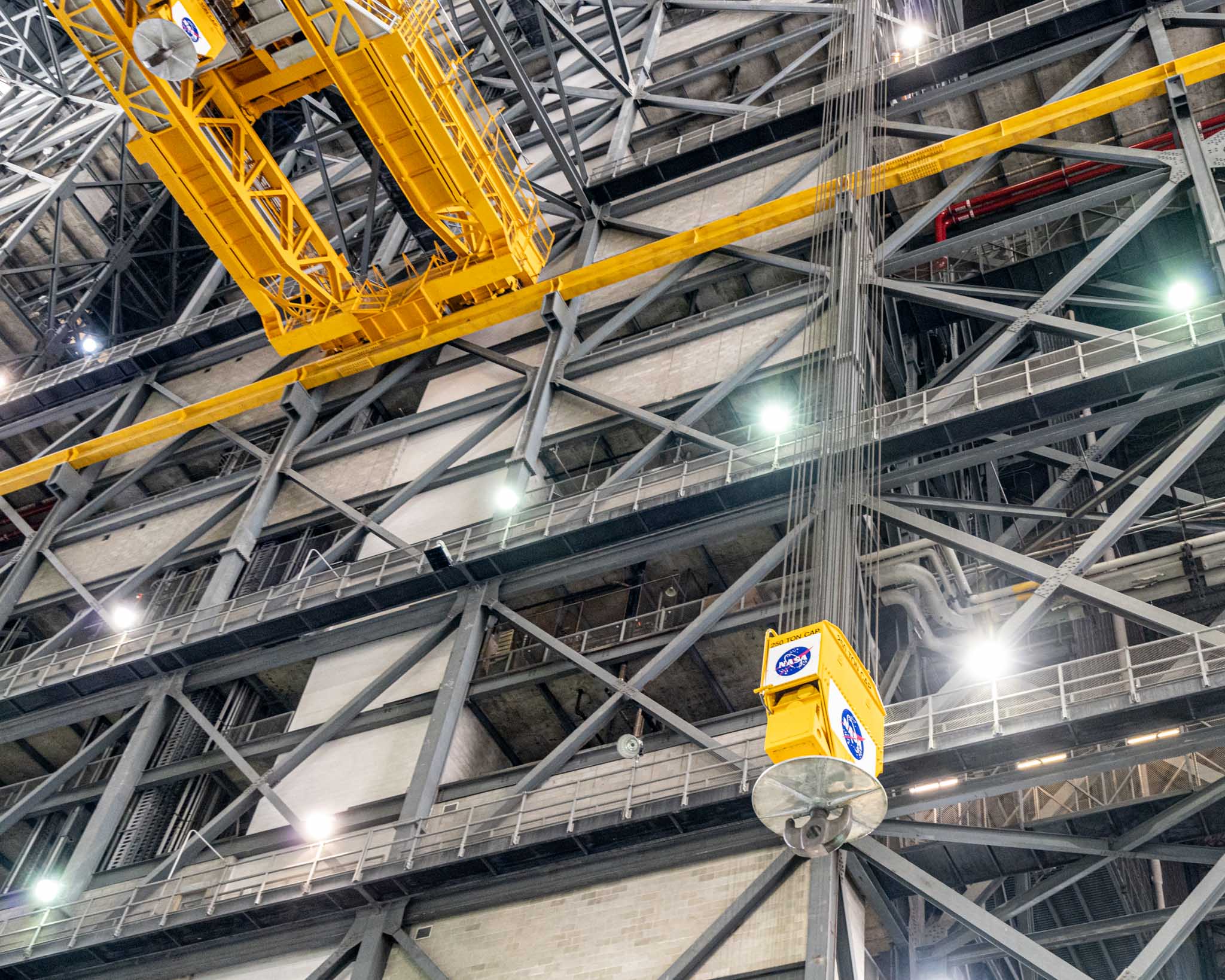

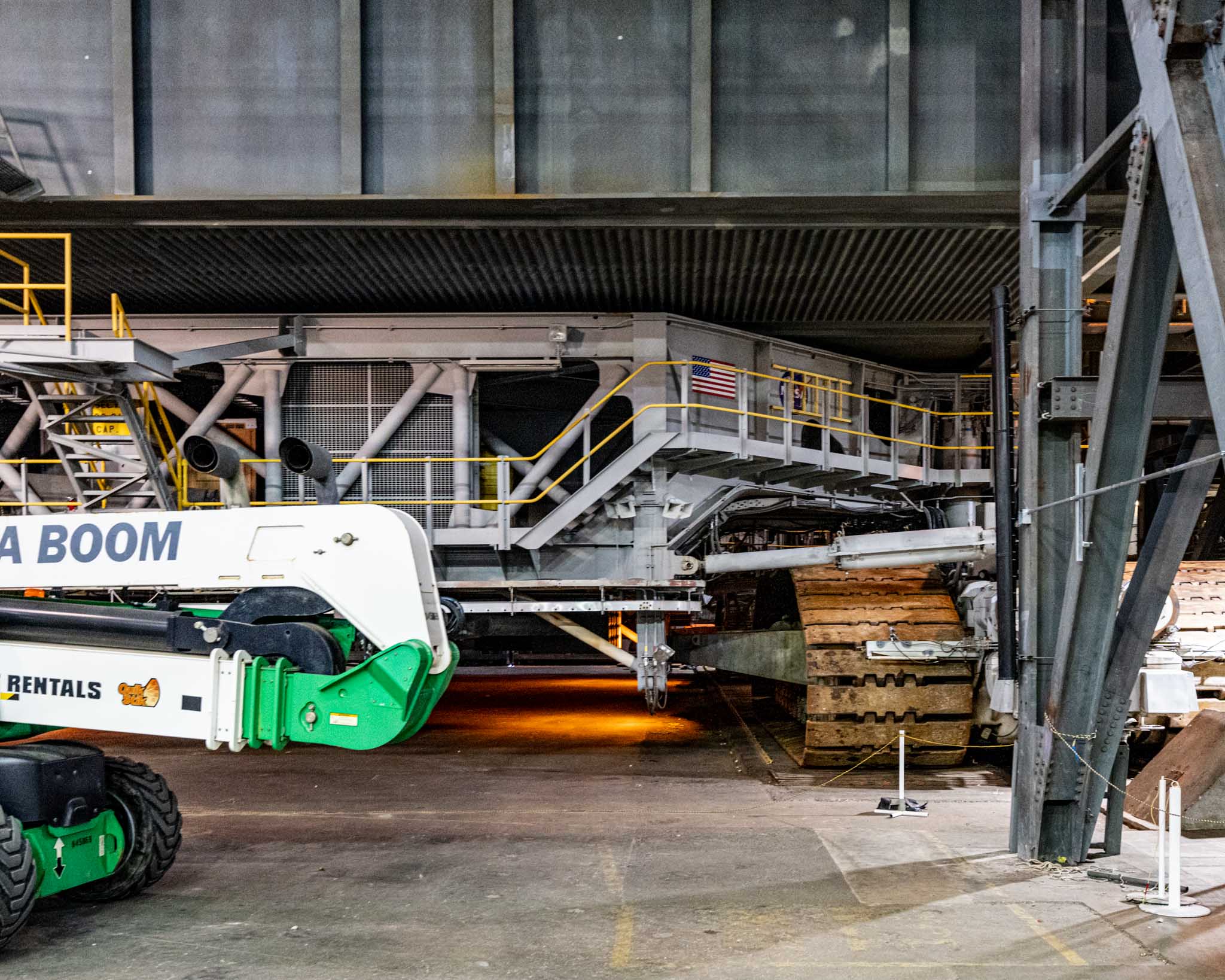

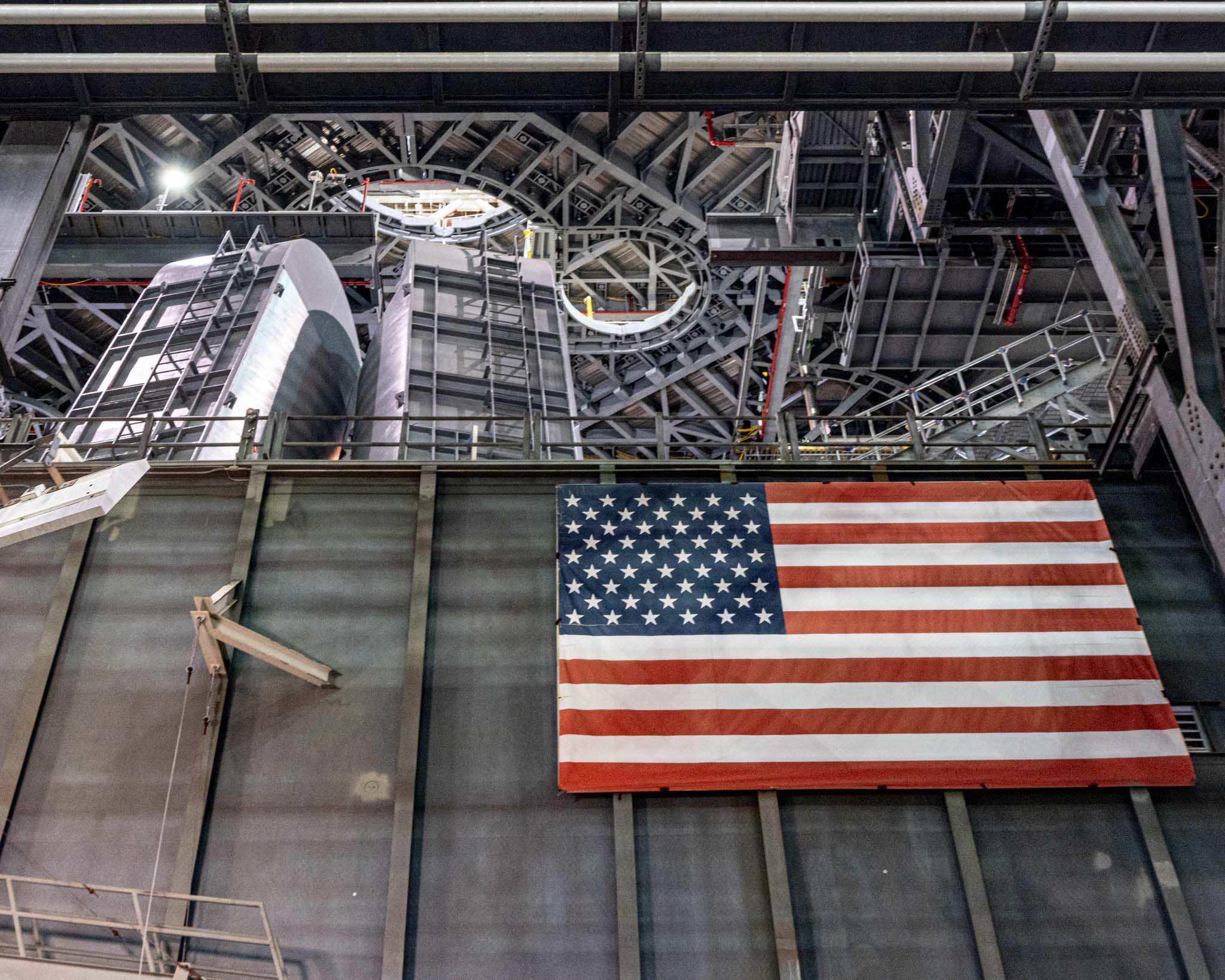
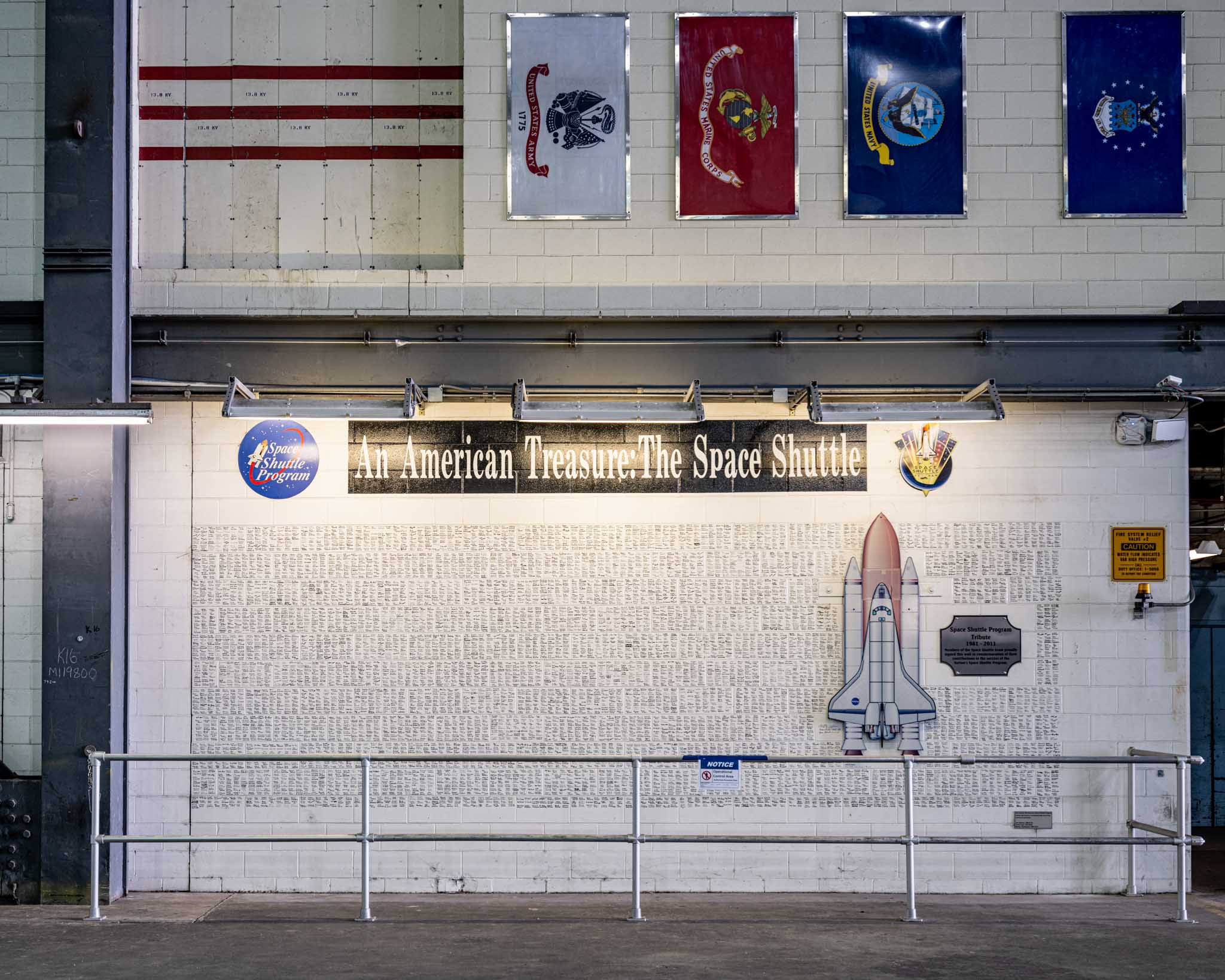
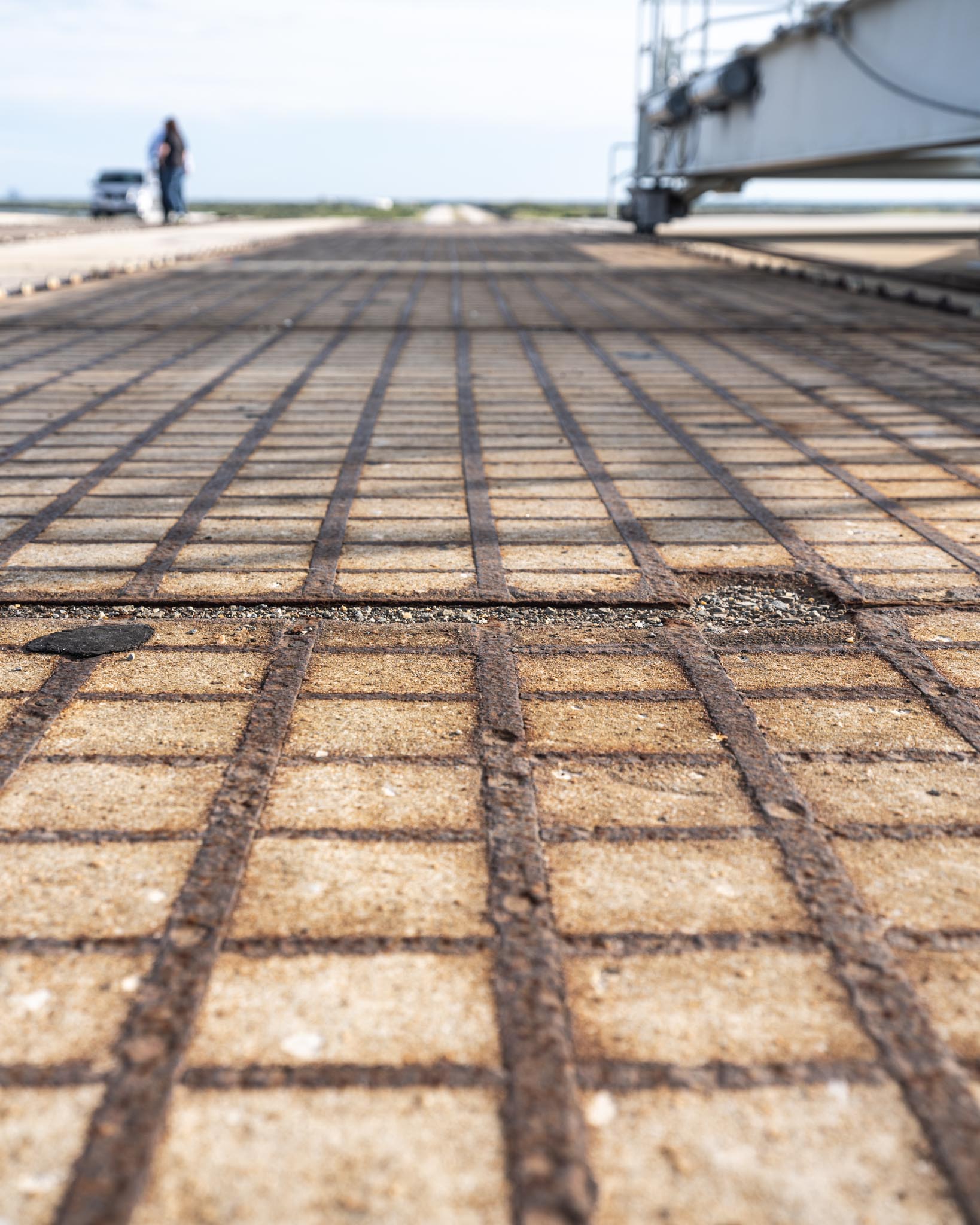

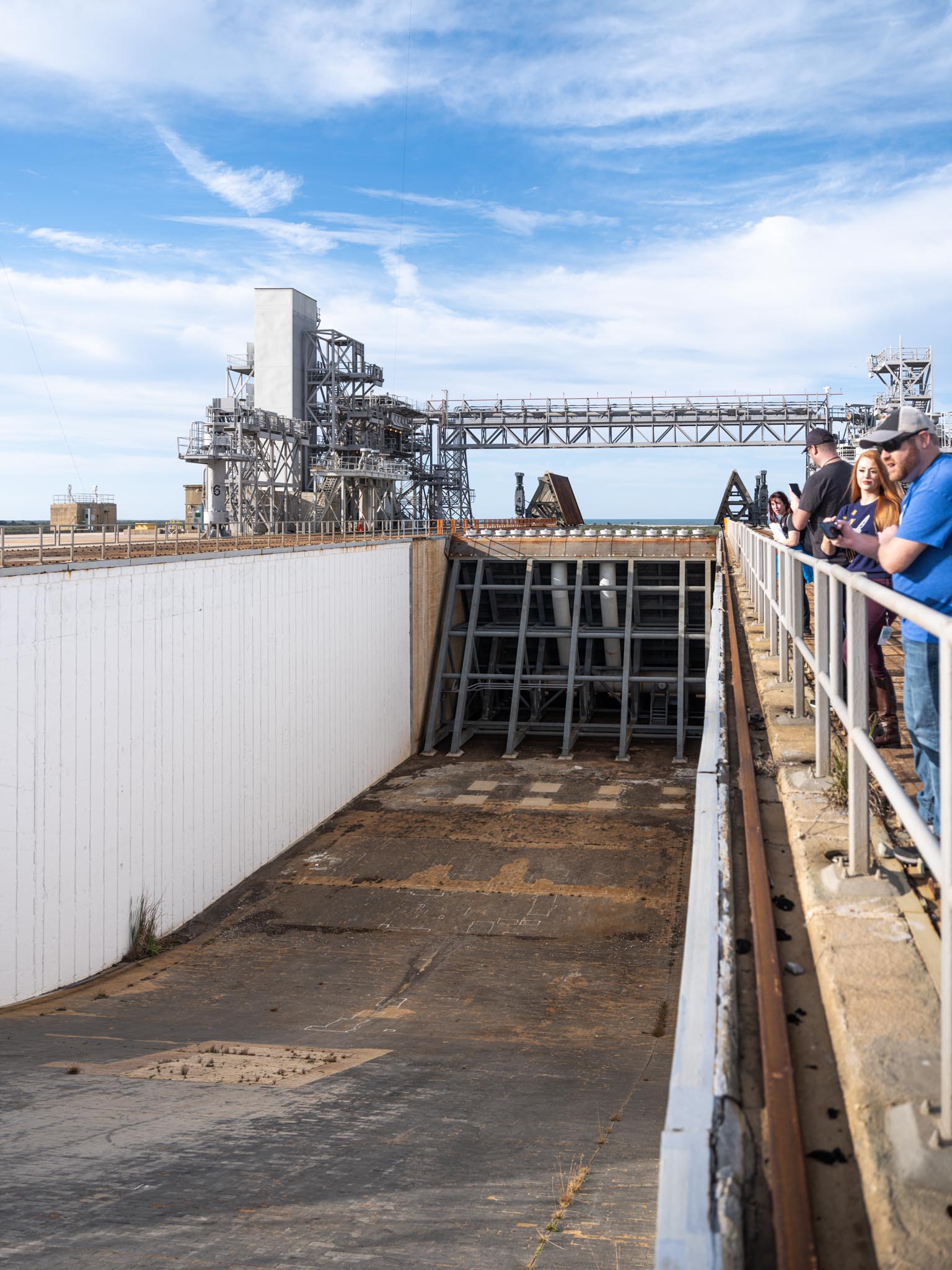


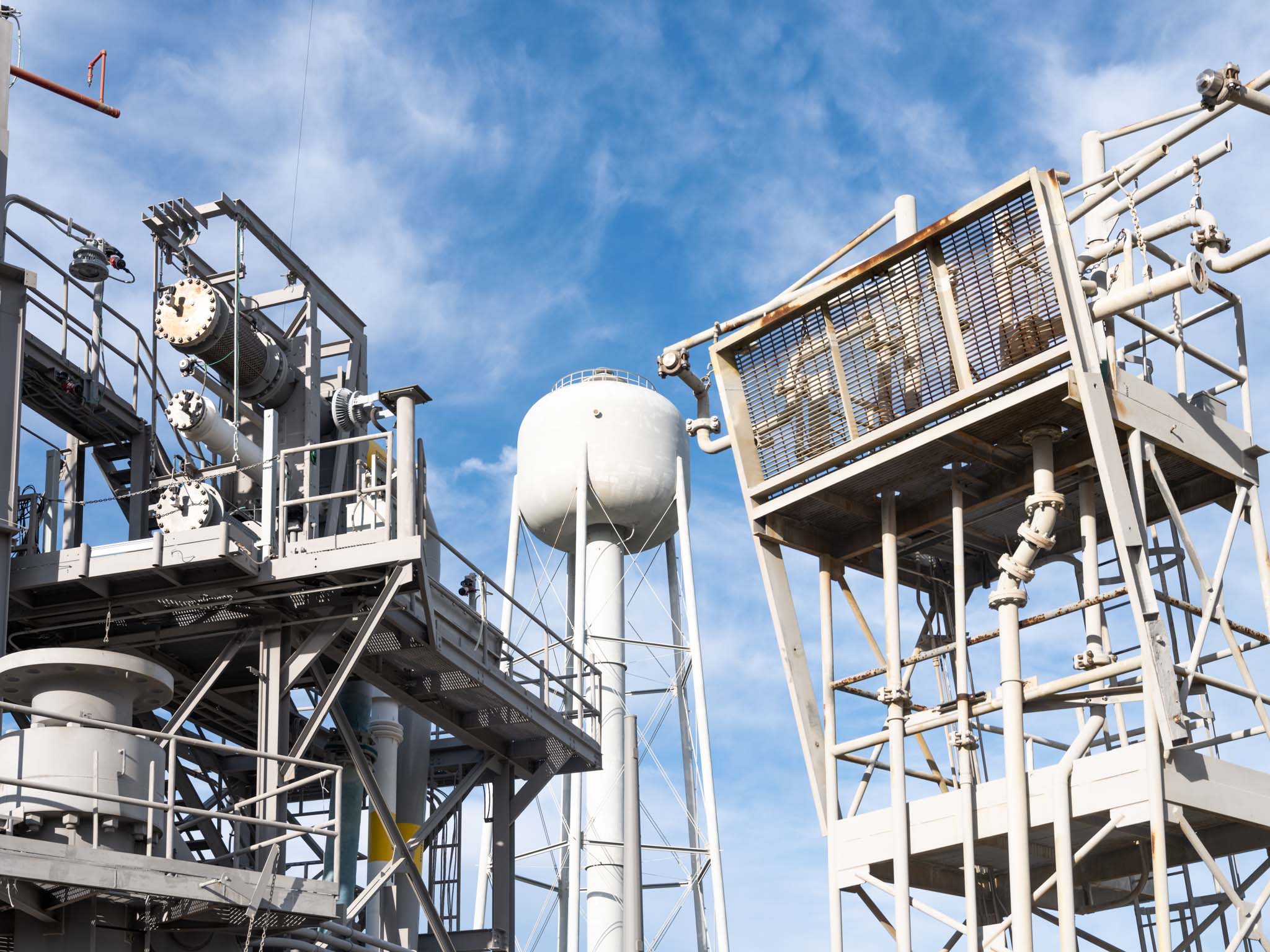

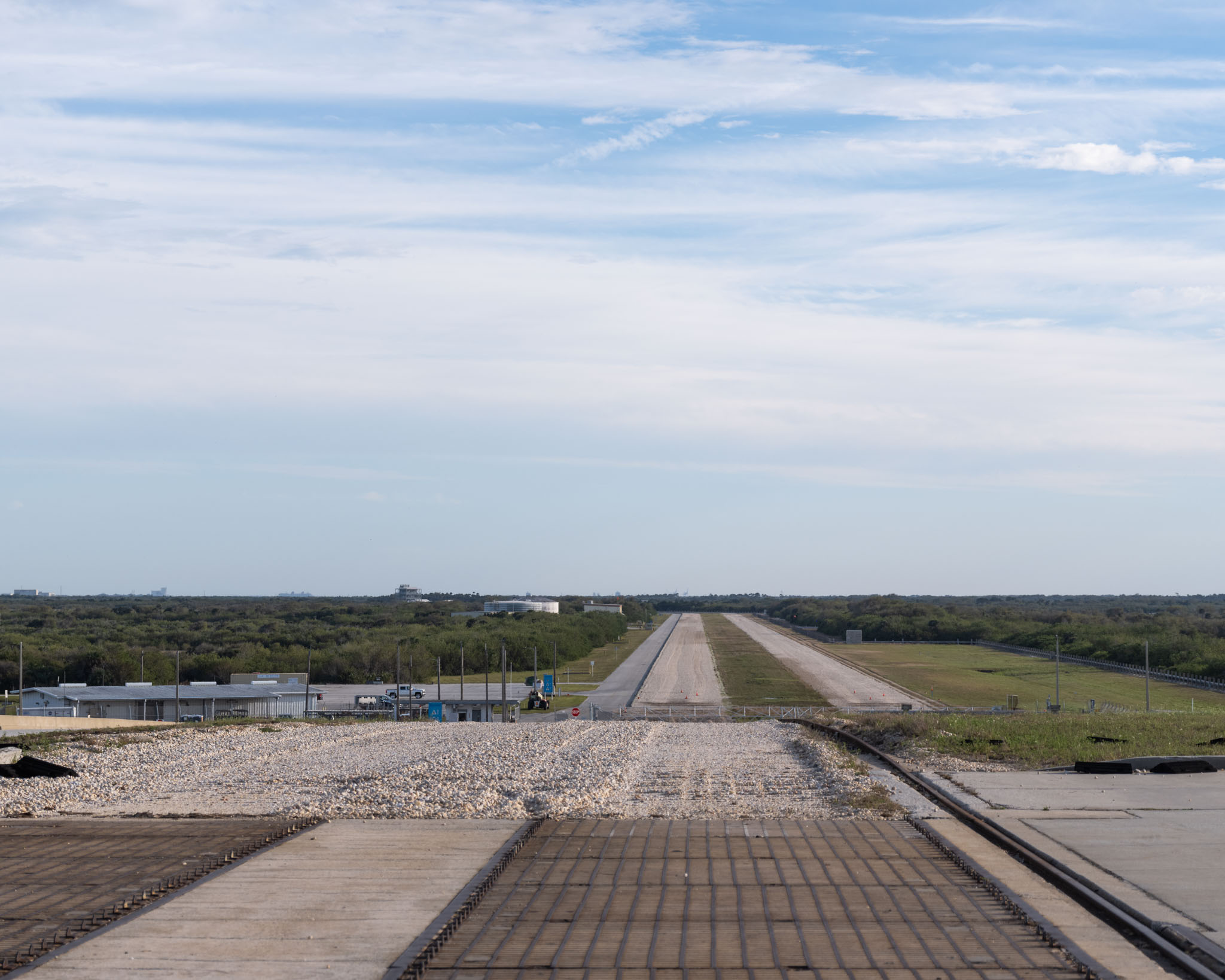



Hey Andy, wow. Seems you had a blast at KSC. I love it when I can spend time out there. KSC and Cape are just two amazing places.
I just want to let you know, that something went wrong during your trip. If you were scheduled to visit Launch Pad 39A, you definitely ended up at the wrong place. The place you toured is 39B which is a multi-use pad. 39A is only used by SpaceX and you can identify it by the big building with the SpaceX Logo on it. It’s the HIF.
Oops, you’re exactly right! I’ve updated the post, thanks for the heads up!